The specific time caused by the introduction of the SARS-CoV-2 coronavirus pandemic affects many aspects of the daily, professional and economic life of society. This is also reflected in trademarks. Since February 2020, offices have been receiving new and new applications for registration of exclusive rights for signs referring – both in word and graphic terms – to SARS-CoV-2 coronavirus.
History repeats itself
Just three days after the bombing of the Boston Marathon in April 2013, four applications for the registration of “Boston Strong” signs inspired by the slogan created to support the city after the attack have already been submitted. Seven more have finally been submitted. In 2017, President Donald Trump wrote on his Twitter “Despite the constant negative press covfefe”. The word “coverage” – as explained – was deliberately replaced by the word “covfefe”, which was later used in many cultural, economic and social messages. This was confirmed by 42 separate attempts to register it as a trademark. Another wave of applications took place in 2018 after Philadelphia Eagles performed the famous trick “Philly Special” in Super Bowl LII. At that time, 10 trademark applications were filed concerning that term.
Human nature is constructed in an extremely simple way. We look for sensations, events that attract attention and inspire. Using the moment, we want to take advantage of them, in a way, to turn them into our success. Attempts to register trademarks that are copies of some loud, socially functioning words or phrases – on a smaller or larger scale – appear on an ongoing basis. Entrants are deluding themselves that they will be able to sell the designation for profit to another market player once they have obtained the exclusive right of protection for the designation. Nothing could be further from the truth.
No for protecting coronavirus
Trademarks are also an effective tool for consumer protection. They provide information and guarantee. Dressing things with a specific trademark make sure they are of a certain, known quality. Thanks to this, the consumer knows what kind of product he or she is looking for. By labeling things with the right mark, the consumer can build relationships with a specific brand, trust it and know who is actually behind the product.
This is one of the reasons why it would appear that trademarks using any modification of “COVID-19” or “coronavirus” in their word and figurative versions should not be registered. Unless someone undertakes to make assurances that he or she is the discoverer of the SARS-CoV-2 coronavirus or the creator or manufacturer of vaccines against it, it seems absurd to claim registration of rights. Most applications have been registered in the United States Patent and Trademark Office and the Italian Ministero dello sviluppo economico. This is quite abstract, as it is in these countries that the incidence rate was the highest. It would seem that people, faced with the fear of getting ill, will not think about creating and registering trademarks and (illusory) later profits.
Joyous work
It can be considered that among the reports referring to the SARS-CoV-2 coronavirus pandemic, those in the quickest to create a character, i.e. slogans, reign. The vast majority are verbal trademarks. Many applications concern the word “coronavirus” itself, or the term “COVID-19” in various lowercase and uppercase configurations, or a reordering of them.
As an example of more interesting slogans, you can give those submitted to the U.S. Patent and Trademark Office. These include “CORONAVIRUS: MADE IN CHINA” (notification number: 88841321), ‘I SURVIVED THE CORONAVIRUS 2020’ (notification number: 88832683), ‘YOU TOUCHED IT, YOU GOT IT, CORONA’ (notification number: 88856467) or ‘LOVE IN THE TIME OF CORONAVIRUS’ (application number: 8885309).
True creative creativity can be seen in applications for verbal and graphic symbols. Below are examples of some of those that stand out from the rest:
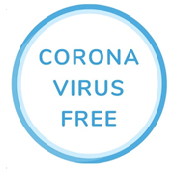
application number: 018224323
the place of the report: European Union Intellectual Property Office (European Union)
goods and services: inter alia, information technology and audiovisual, multimedia and photographic equipment (Class 9 of the Nice Classification); clothing, headgear and footwear for medical personnel and patients (Class 10 of the Nice Classification); clothing (Class 25 of the Nice Classification); coffee, tea (Class 30 of the Nice Classification); scientific and technological services (Class 42 of the Nice Classification).
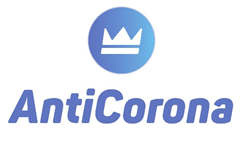
application number: 018209699
the place of the report: European Union Intellectual Property Office (European Union)
goods and services: soaps and gels (Class 3 of the Nice Classification); anti-bacterial alcohol-based gels for skin decontamination (Class 5 of the Nice Classification); protective masks (Class 9 of the Nice Classification); rubber gloves for medical use (Class 10 of the Nice Classification); disinfectants (Class 11 of the Nice Classification); paper filtering materials (Class 16 of the Nice Classification); textile materials for filtering (Class 24 of the Nice Classification).
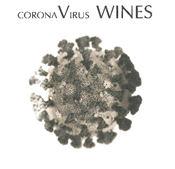
the application number: 2020000023416
the place of the report: Ministero dello sviluppo economico (Italy)
goods and services: clothing, footwear, headgear (Class 25 of the Nice Classification); alcoholic preparations for making beverages; alcoholic beverages other than beers (Class 33 of the Nice Classification).
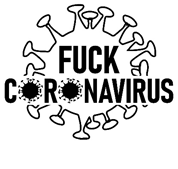
the application number: 2020000025972
the place of the report: Ministero dello sviluppo economico (Italy)
goods and services: bathing shoes, sweaters, shirts, tights, gloves, scarves, jackets, swimwear, bathrobes, headgear, footwear, socks, belts, bath towels, sportswear, (Class 25 of the Nice Classification).
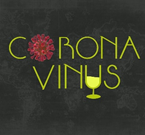
the application number: M4061825
the place of the report: Ministerio de Industria, Comercio y Turismo (Spain)
goods and services: alcoholic beverages other than beer (Class 33 of the Nice Classification); restaurant services, temporary accommodation (Class 43 of the Nice Classification).
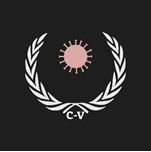
the application number: N0413296
the place of the report: Ministerio de Industria, Comercio y Turismo (Spain)
goods and services: advertising, business management, office services, linen fabrics, video games, items for mobile phones (Class 35 of the Nice Classification).

the application number: 3020202115458
the place of the report: German Patent and Trade Mark Office (Germany)
goods and services: inter alia, antibacterial hand washing products, antibacterial soaps, disinfectant soaps (Class 5 of the Nice Classification).
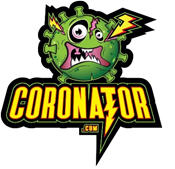
the application number: 3020201036406
the place of the report: German Patent and Trade Mark Office (Germany)
goods and services: posters, posters, brochures, catalogs, stationery, office supplies, binders (Class 16 of the Nice Classification).

the application number: 88790444
the place of the report: United States Patent and Trademark Office (United States)
goods and services: recorded audiotapes with music and recorded albums (Class 9 of the Nice Classification); headgear, short-sleeved shirts (Class 25 of the Nice Classification); entertainment services in the form of live performances by a music and vocal group (Class 41 of the Nice Classification).
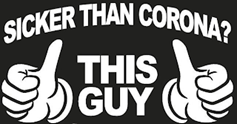
the application number: 88838159
the place of the report: United States Patent and Trademark Office (United States)
goods and services: clothing, namely: T-shirts, shirts, trousers, jackets, blouses, tracksuit trousers, sweaters, leggings, shoes (Class 25 of the Nice Classification).
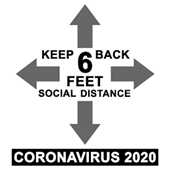
the application number: 88858986
the place of the report: United States Patent and Trademark Office (United States)
goods and services: clothing and clothing, shirts, caps (Class 25 of the Nice Classification).
Outlook
The trademarks applied for are intended for those most universal classes for clothing, consultancy services, or – directly related to the pandemic and the applicable restrictions – cleaning and disinfecting agents. Applicants are likely to resell the rights to (possibly) registered signs at a later stage.
However, this will most likely not happen. Each application must be considered individually by an expert. It is up to the expert to decide whether a particular designation meets the absolute prerequisites for its registration and for obtaining an exclusive right. It should be borne in mind, however, that when applying for trademarks that refer in word or figurative terms to the words “coronavirus”, “SARS-CoV-2” or “COVID-19”, the expert will be able to refer to absolute grounds for refusal.
The filing of applications for registration of signs which are created only based on momentary, noisy events cannot be regarded as fulfilling the basic roles of trademarks. The origin, quality or informational function of a designation of origin will not be fulfilled by placing on the market a designation based on the newly discovered SARS-CoV-2 coronavirus. Moreover, when an event appears in the headlines of all newspapers and news portals, the name used for it quickly becomes descriptive. This may also mean that a trademark application containing the words ‘coronavirus’, ‘SARS-CoV-2’, or ‘COVID-19’ is rejected. Furthermore, such applications may be considered contrary to public order and morality.
Control is essential
However, any trademark application containing a reference to the SARS-CoV-2 coronavirus in its verbal or graphic layer cannot be considered to be automatically rejected. This all depends on several factors taken into account during the examination carried out by the expert.
It is difficult to imagine a situation where a vaccine manufacturer would not be able to register a trademark for them referring to ‘coronavirus’, ‘SARS-CoV-2’, or ‘COVID-19’. In this case, it is clear that such a mark will be able to fulfill its essential functions without misleading the public.
The registration with WIPO (World Intellectual Property Organization), following the notification No 1524487 of the Italian company of 27 February 2020, is interesting. At that time, the SARS-CoV-2 coronavirus was already a serious problem for Italian citizens. Despite this, the designation test for pasta products in class 30 of the Nice Classification was positive.
It must be borne in mind that each trademark undergoes an individual examination. Even if it appears at first sight that a sign should not be registered for specific goods or services, the opinion of the representatives of the office concerned may be different.


